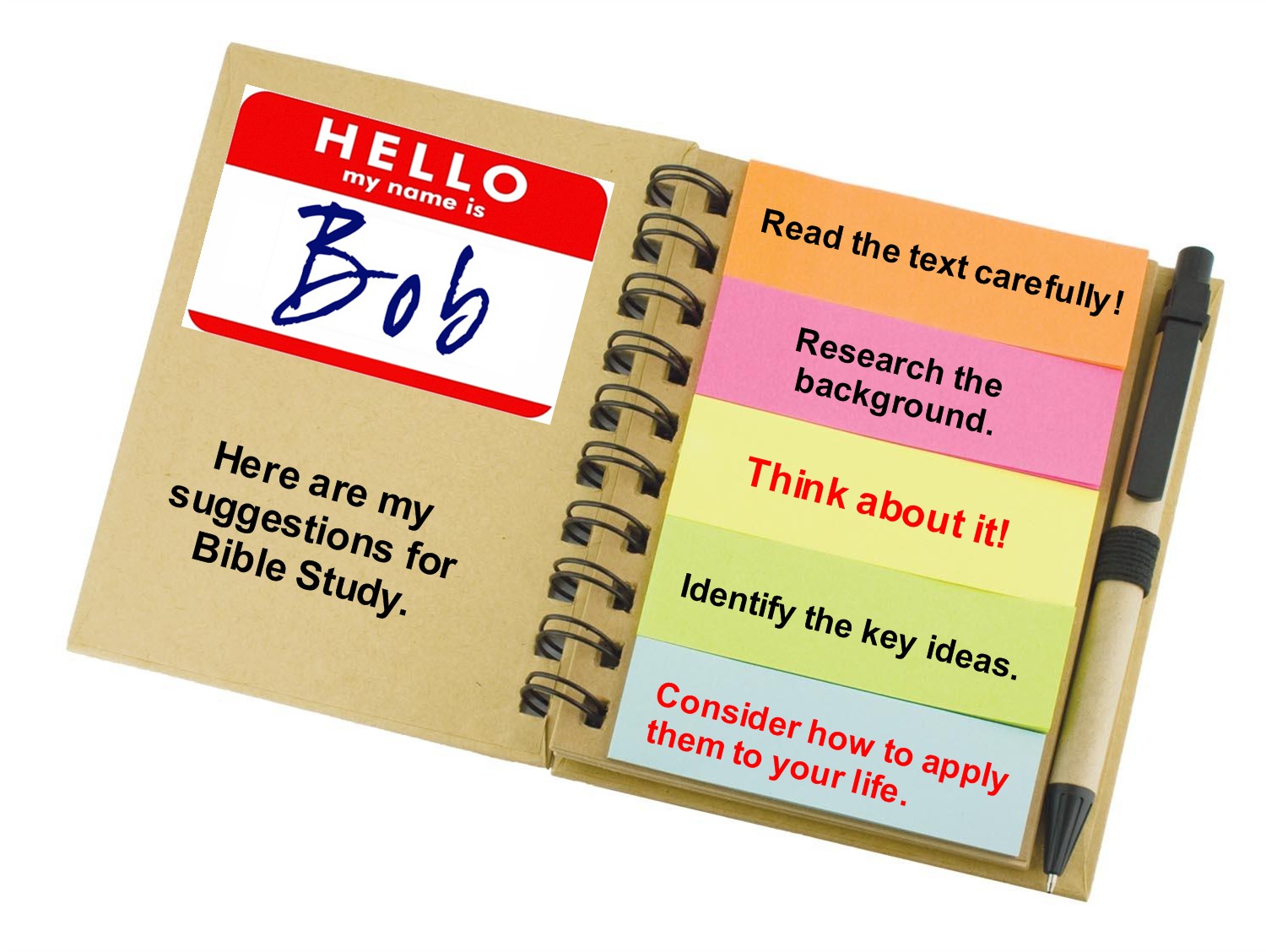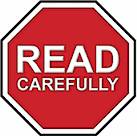
Menu:
Robert Bernhardt

Send me e-mail at:
RJB@
RobertBernhardt.com
Bible Study
There are many possible approaches for studying the Christian faith. What I am recommending here is a simplified step-by-step approach to be used for reading and interpreting a specific passage of scripture. In the Christian community we often describe this activity simply as "Bible Study". We select a portion of scripture, short or long, and attempt to understand and explore what it says. This sort of basic Bible Study is the foundation for all the other study and discussion techniques we may use to explore the Christian faith.

Let me comment briefly on each of the five steps that I propose that we should follow.
Note: Those who have a commitment to faith must always approach this activity that we call "Bible Study" in a spirit of prayer. If we believe that the Bible is God's word for his people then it is both appropriate and essential that we ask God to help us understand it.

First, choose as your text a reliable translation (rather than a paraphrase). Then read and reread the text. Linger over it. Try to capture in your mind's eye the scene depicted or the times in which the words were penned. Gradually frame the questions that you feel need to be answered in order for you to understand the text more completely. These may be questions about the customs of the time, the location of the places named, the terminology used, or even questions about the emotions represented in the text. Spend lots of time reading the text.

Now start looking for the answers to your questions. At this point a study guide or a group leader may be a very valuable resource. However, you also need to learn to use a variety of study tools to help you in your quest for answers. If you are using a "Study Bible" you may find considerable help right in your Bible. Not only does a Study Bible include brief commentary notes beneath the text it usually also indicates any similar or parallel passages elsewhere in the scriptures (something that is especially helpful when doing Bible Study in any of the four Gospels). If your Bible includes between the columns of text cross references to other places in scripture learn how to use them. You may need to consult some biblical maps for the appropriate time in history. Use a Bible dictionary or a Bible atlas to check out some of the names of people and places mentioned in the text. A concordance will allow you to find other places in the scriptures where certain key words in the text may appear. A short list of Internet Bible Study resources may be accessed by clicking on Bible Study Helps on the Internet This step involves a bit of work but the insights gained are often critical.

Of course, you have been doing a lot of thinking since the beginning of this process but make sure that you give yourself time just to think about the passage in the light of the additional information that your research has provided. Don't rush to conclusions or simply accept the responses that others may have voiced about the text. Take time to think about it for yourself. Don't be discouraged if your research has not provided an answer for every question that you may have posed about the text. If we believe that this text is part of what God wants us to know about him or about our human situation then there must be something of importance for us here.
Cautionary Note: So far in this process I have not advocated the use of "Bible commentaries". Of course they are useful tools and if they are well done they introduce us not only to that commentators insights but to the insights that other commentators before them have also had about the text. We cannot expect to arrive at every accurate and useful isight about any passage of scripture all by ourselves. However, we need always to begin with a carefull and thorough exploration of the text for oursleves. If we turn to commentators too soon we will simply accept their insights before we even seriously look at the text for ourselves. Therefore I suggest that we proceed through at least the next step in this proposed approach before we turn to commentators. Even then we must exercise prudence in the commentators that we choose to consult. Some commentators reflect perspectives that are not in the mainstream of Christian thought and we need to be able to recognize whatever biases they may have.

Thinking about the text gradually moves us into the process of identifying the key ideas represented in it. Looking past the external details, what are the big ideas that the passage appears to confirm or suggest? This is a good point at which to take up pen and paper and try to list in simple language the various things that we think this passage is really all about. If possible list your items in the approximate order of their importance in the passage. Just to get yourself going ask yourself such questions as,
a) What does this passage teach me about God and his purposes?
b) Do the concerns that the passage addresses still apply to our situation today?
c) Are there thoughts or ideas in this passage that I have never really thought about before?

The purpose of Bible Study is not complete until we invest some time and enthusiasm in responding to some final questions. If I accept what I understand this passage of scripture to be teaching, in what way should my thinking and acting be impacted by what this text says? What truths conveyed in this passage of scripture must have a practical impact on the way I am living my life? What am I going to do about it?